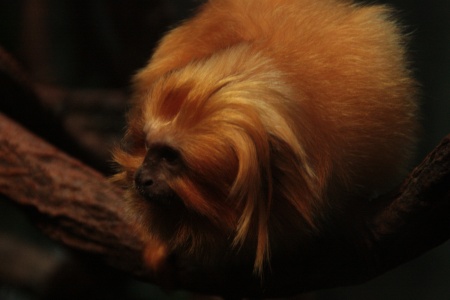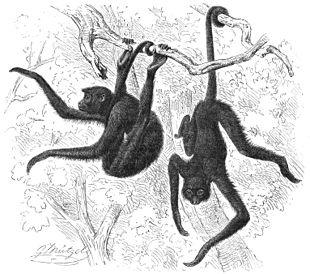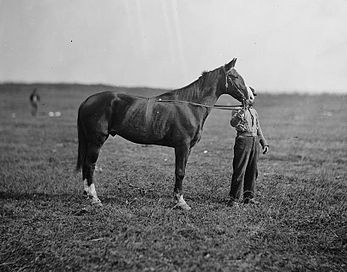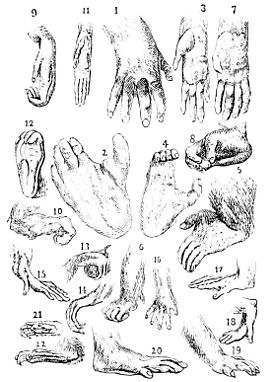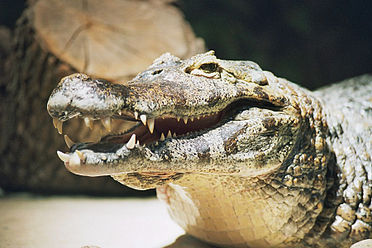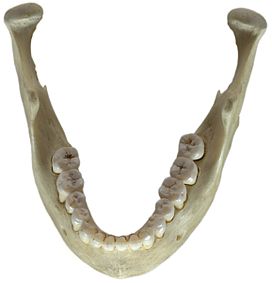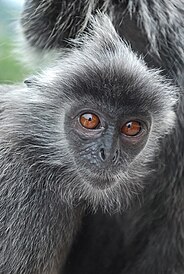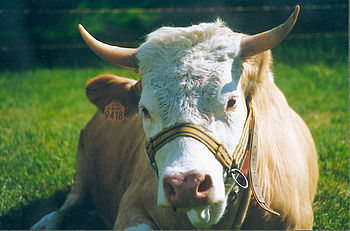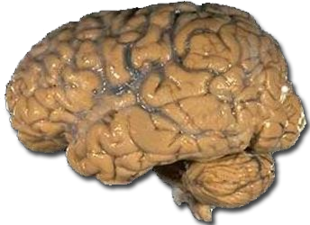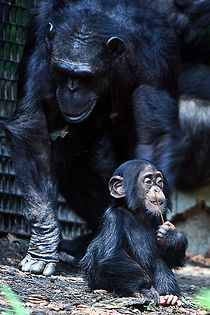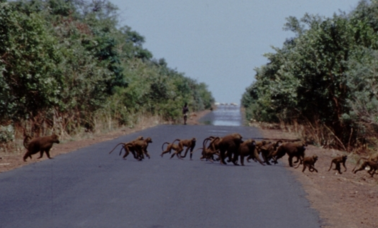Biological Anthropology/Unit 2: Non-human Primates/Modern Primates
Contents
IMPORTANT NOTE: THESE PAGES WILL NO LONGER BE UPDATED. THEY HAVE BEEN MOVED TO PRESSBOOKS AS PART OF A COLLEGE INITIATIVE TO COLLECT OER MATERIALS IN ONE PLACE FOR STUDENTS.
Modern Non-human Primates
Why is primatology in anthropology?
Anthropology is the study of humans and the human condition. Humans are primates. We belong to the taxonomic order Primates (pronounced pry may tees). This order encompasses humans as well as what we call non-human primates. Non-human primates are our closest biological and evolutionary relatives. So, we study them in anthropology in order to learn more about ourselves.
General mammalian characteristics
The earliest evidence of mammals is from the Mesozoic era, however, there is limited fossil evidence and the fossils that have been found are mouse-like forms with quadrupedal locomotion. Primates evolved from an ancestral mammal during the Cenozoic era and share many characteristics with other mammals. The Cenozoic is the era of the adaptive radiation of mammals with thirty different mammalian orders evolving.
Some of the general characteristics of mammals includes:
- mammary glands: females produce milk to feed young during their immediate post-natal growth period
- hair: mammals have hair (sometimes called fur) that covers all or parts of their body
- jaw: the lower jaw is a single bone
- ear: the middle ear contains three bones: stapes (stirrup), incus (anvil), and malleus (hammer)
- heart: four-chambered heart
- aortic artery: main artery leaving the heart curves to the left to form the aortic arch
- diaphragm: mammals have one
- endothermy: mammals regulate their body temperature to maintain homeostais (a constant body temperature)
- diphyodonty: teeth are replaced only once during lifetime
General primate characteristics
While primates share traits with other mammals, such as mammary glands and endothermy, there are a number of derived traits that all primates share. Because humans share an evolutionary history with non-human primates (we share an ancestral primate), we share certain biological and behavioral traits with them.
Body
Primates have a flexible and generalized limb structure that's able to move readily in many directions. Compare the flexibility of the spider monkeys on the left with the horse on the right.
Hands
Primates have prehensile hands (and most of them have prehensile feet also). This means that they have the ability to grasp and manipulate objects.
Primates have 5 digits (pentadactyly) on their hands and feet. Note that a few primates, like spider monkeys, have what are called vestigial thumbs. This means that they have either a very small or non-existent external thumb (but in that case, they will still have a small internal thumb bone).
Primates have flattened nails instead of claws.
Primates have very sensitive tactile pads on their digits with fingerprints (dermatoglyphs). Some monkeys, like woolly monkeys, have similar pads with fingerprints on the ends of their prehensile tails. Therefore, it functions just like another hand.
Check out the similarities and differences of the various primate hands in the image on the right.
Teeth
Primates have heterodonty, meaning that they have different teeth that perform different tasks when processing food via biting or chewing. With this, they have an ability to have a more generalized diet (compared to a specialist diet), meaning that they have more dietary flexibility. Why would this be a good thing to have?
Compare the teeth of the cayman (a relative of crocodiles and alligators) with the human teeth on the right. While the cayman's teeth do vary in size, they don't vary in structure. However, the human has incisors, canines, premolars, and molars -- all of which perform different food processing tasks.
Senses
Compared to most other mammals, primates have an increased reliance on vision and a decreased reliance on their senses of smell and hearing.
Associated with this are their smaller, flattened noses, loss of whiskers, and relatively small, hairless ears.
Also associated with this are their foward facing eyes with accompanying binocular or stereoscopic vision. This type of vision means that both eyes have nearly the same field of vision with a lot of overlap between them. It provides wonderful depth perception (but a loss of peripheral vision).
Note first how the eyes of the monkey on the left are more front-facing than the eyes of the cow on the right. Also note how flat the monkey's nose is and how small its ears are, when compared to those of the cow.
Brain
In relation to other mammals, primates have a more expanded and elaborate brain.
Compare the complexity of the human brain on the left to the cat brain on the right.
Life history
Life history refers to the pattern that an organism takes from conception to death.
When compared to other mammals, primates have :
- longer gestation (pregnancy) periods
- reduced number of offspring (usually one, but some species commonly have twins)
- delayed maturation, with a long infancy and juvenile learning period
- extension of the entire lifespan
Behavior
The behavioral traits we share with other primates include:
- a greater dependence on flexible, learned behavior
- a tendency to live in social groups
Next: Taxonomy of the Living Primates
References
Jurmain R, Kilgore L, Trevathan W. Essentials of physical anthropology, 4th edition. Belmont (CA): Wadsworth, Cengage Learning; 2013. 437 p.
Larsen CS. Our origins: discovering physical anthropology, 3rd edition. New York (NY): W.W Norton & Company, Inc.; 2014. 478 p.
Thies ML. Mammalian characteristics [Internet] [cited 2015 Aug 2]. Available from: http://www.shsu.edu/~bio_mlt/mammals.html
